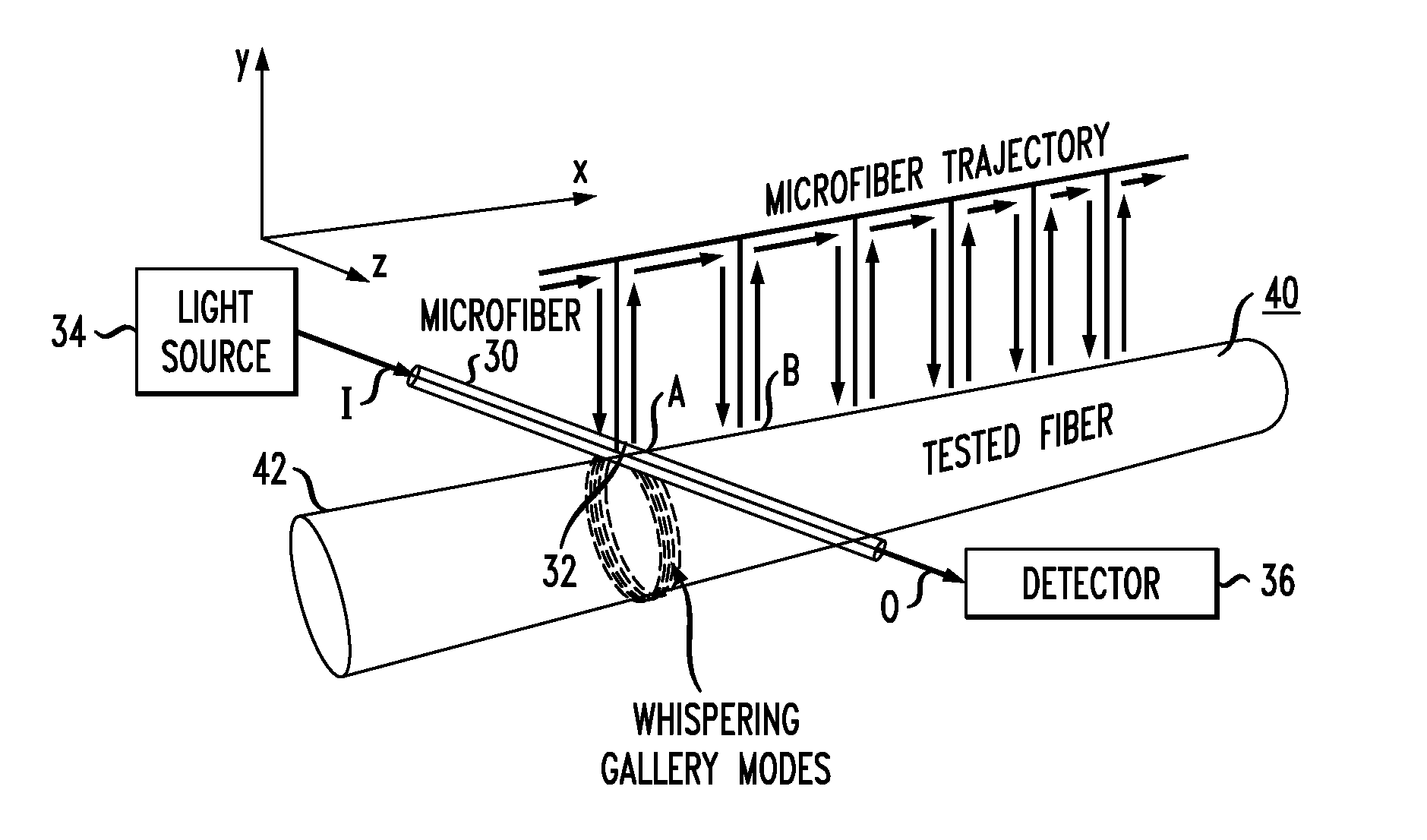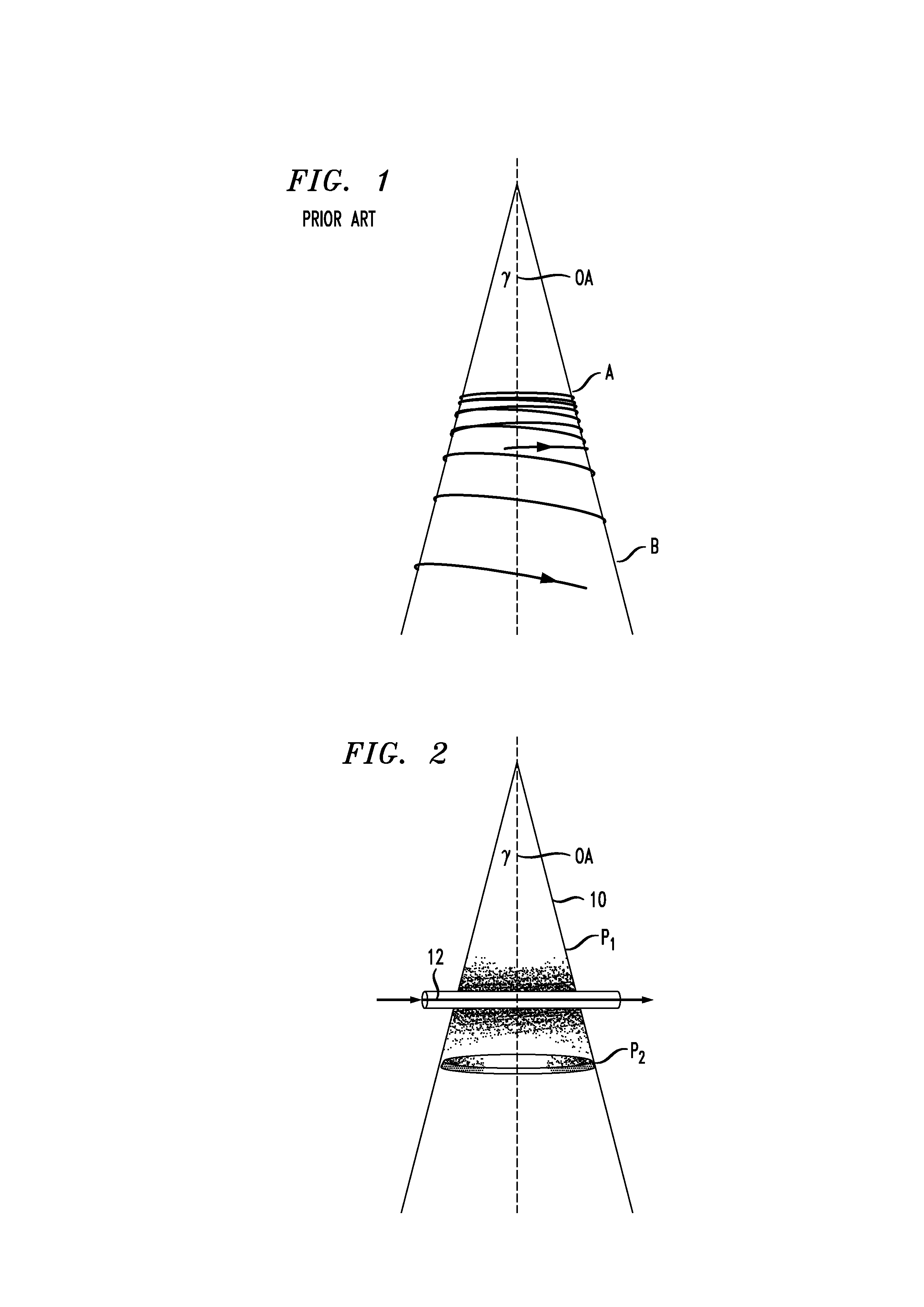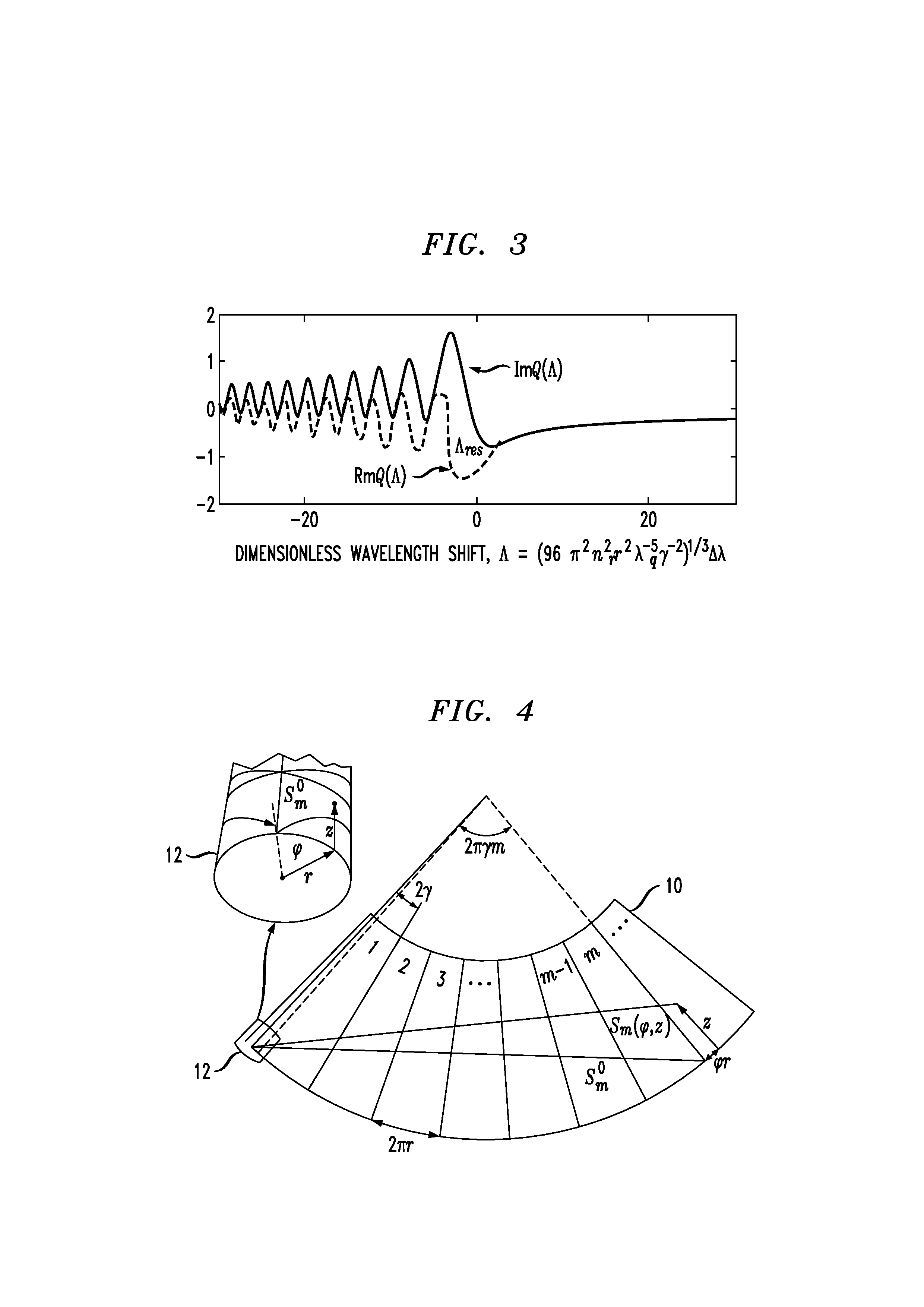High Q-Factor Conical Optical Microresonator And Utilization In The Location Characterization Of Optical Fibers
a conical optical microresonator and location characterization technology, applied in the field of optical microresonators, can solve the problems of affecting the affecting etc., and achieve the effect of rapid and efficient evaluation of the quality of fabricated optical fibers and accurate local characterization of optical fibers
- Summary
- Abstract
- Description
- Claims
- Application Information
AI Technical Summary
Benefits of technology
Problems solved by technology
Method used
Image
Examples
Embodiment Construction
[0027]Classical optics had previously concluded that all whispering gallery modes (WGMs) launched in a conical waveguide will be delocalized and continue to propagate in unbounded fashion, as shown in FIG. 1. That is, it would be expected that the motion is bounded on the narrower side A of the cone, and unbounded on the wider side B, so that any geodesic (classical ray) propagating at the conical surface will eventually move off to infinity.
[0028]Contrary to this premise of classical optics, however, it has been discovered that a conic section with a proper half-angle dimension is indeed bounded and is capable of supporting WGMs. In particular, for a cone with a relatively small half-angle γ (e.g., γ−2), a wave beam launched in a direction normal to the cone axis (such as from a sensor fiber for the case where the cone is defined as the target fiber) can be completely localized, as shown in FIG. 2. FIG. 2 illustrates an exemplary cone 10 with half-angle γ defined as shown and defin...
PUM
 Login to View More
Login to View More Abstract
Description
Claims
Application Information
 Login to View More
Login to View More - R&D
- Intellectual Property
- Life Sciences
- Materials
- Tech Scout
- Unparalleled Data Quality
- Higher Quality Content
- 60% Fewer Hallucinations
Browse by: Latest US Patents, China's latest patents, Technical Efficacy Thesaurus, Application Domain, Technology Topic, Popular Technical Reports.
© 2025 PatSnap. All rights reserved.Legal|Privacy policy|Modern Slavery Act Transparency Statement|Sitemap|About US| Contact US: help@patsnap.com



